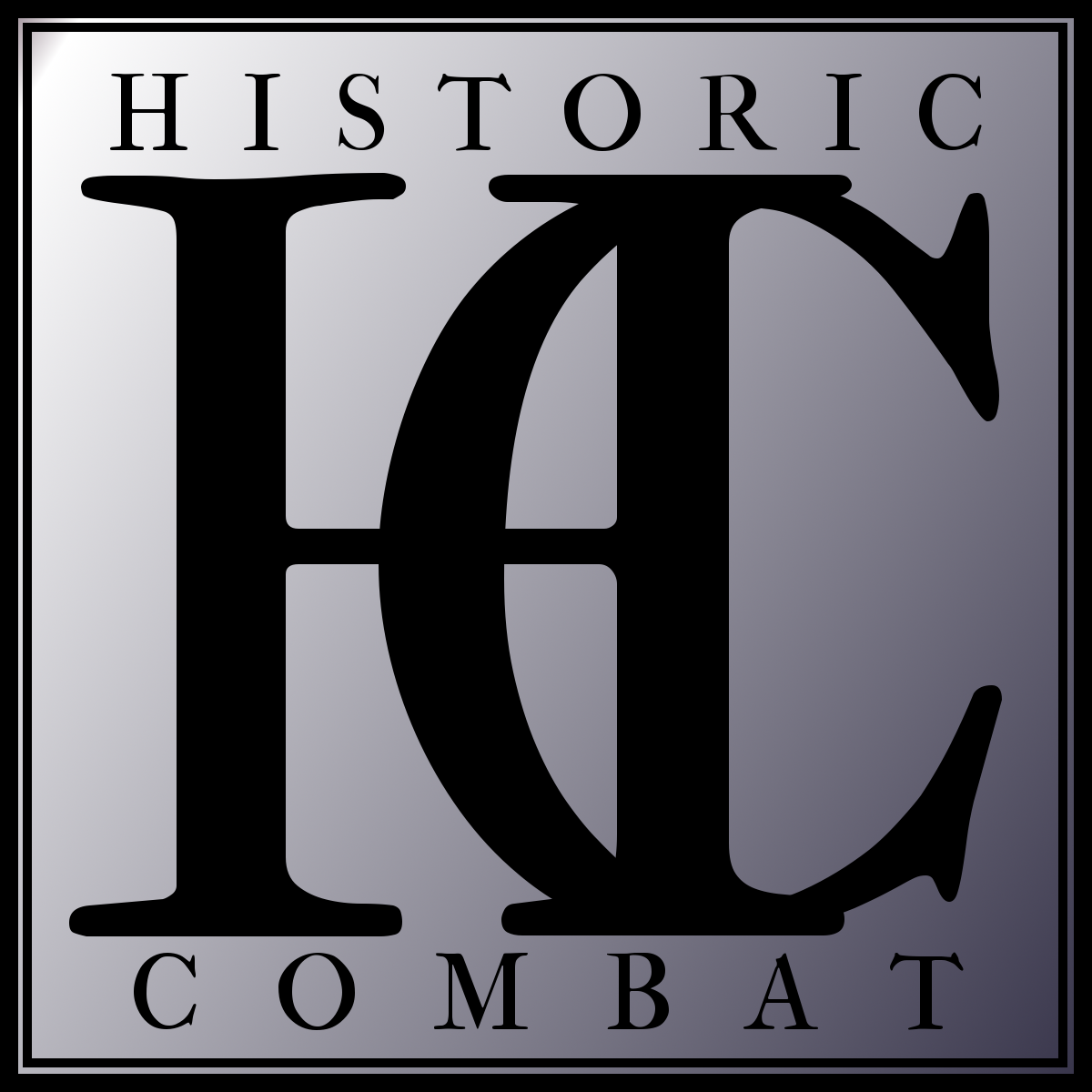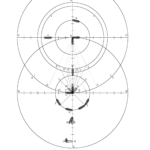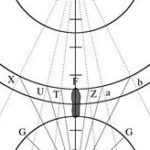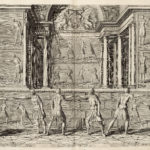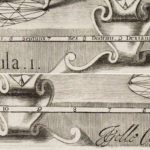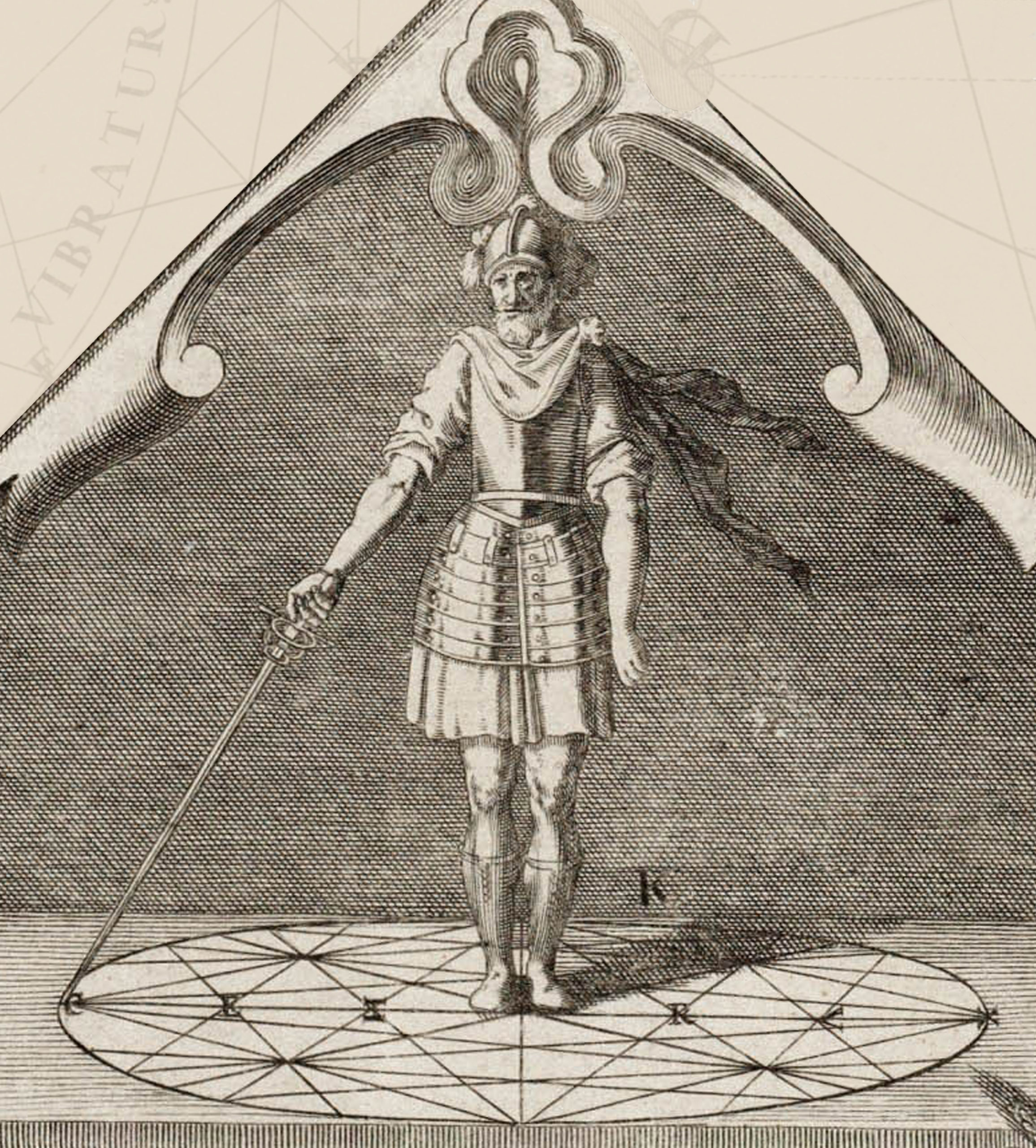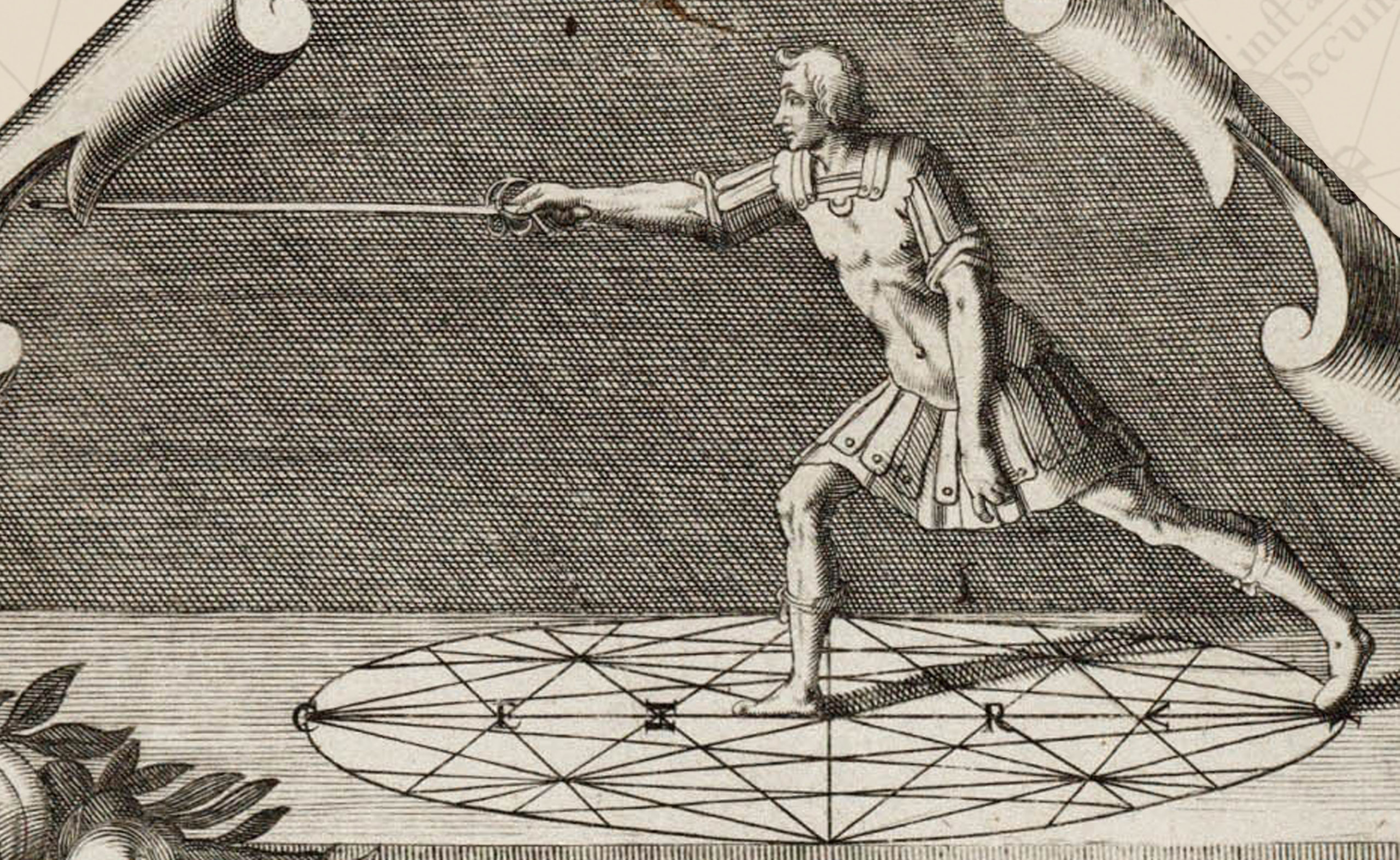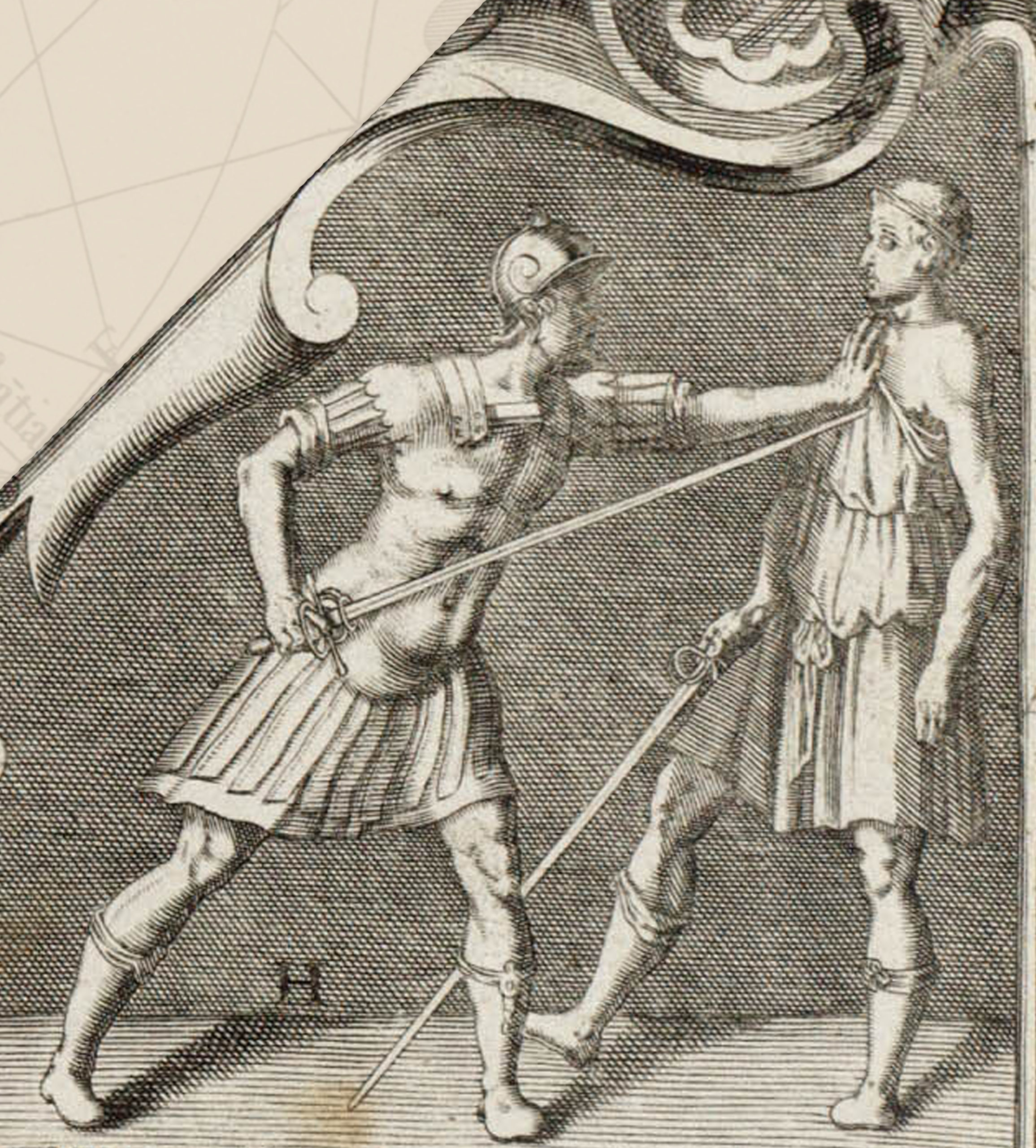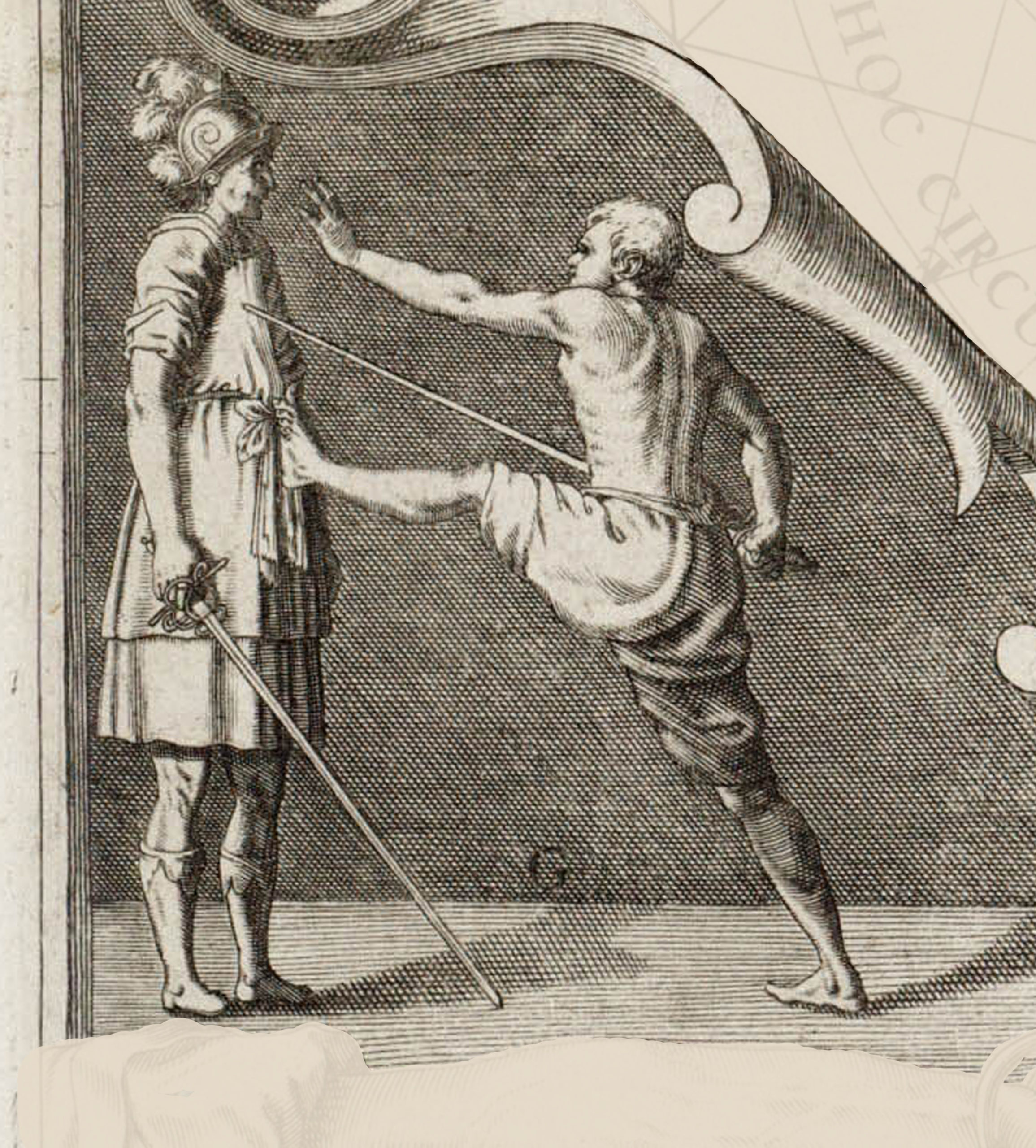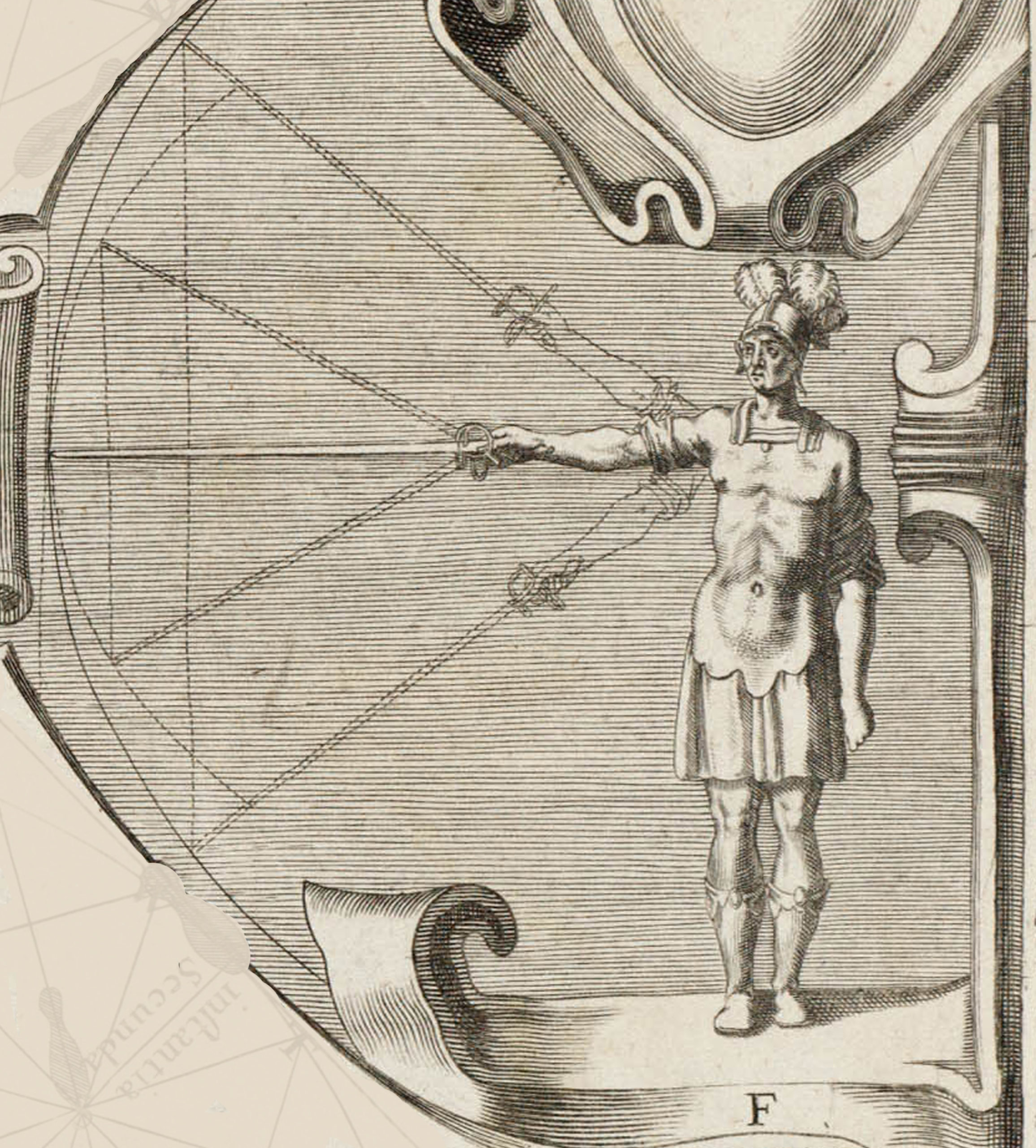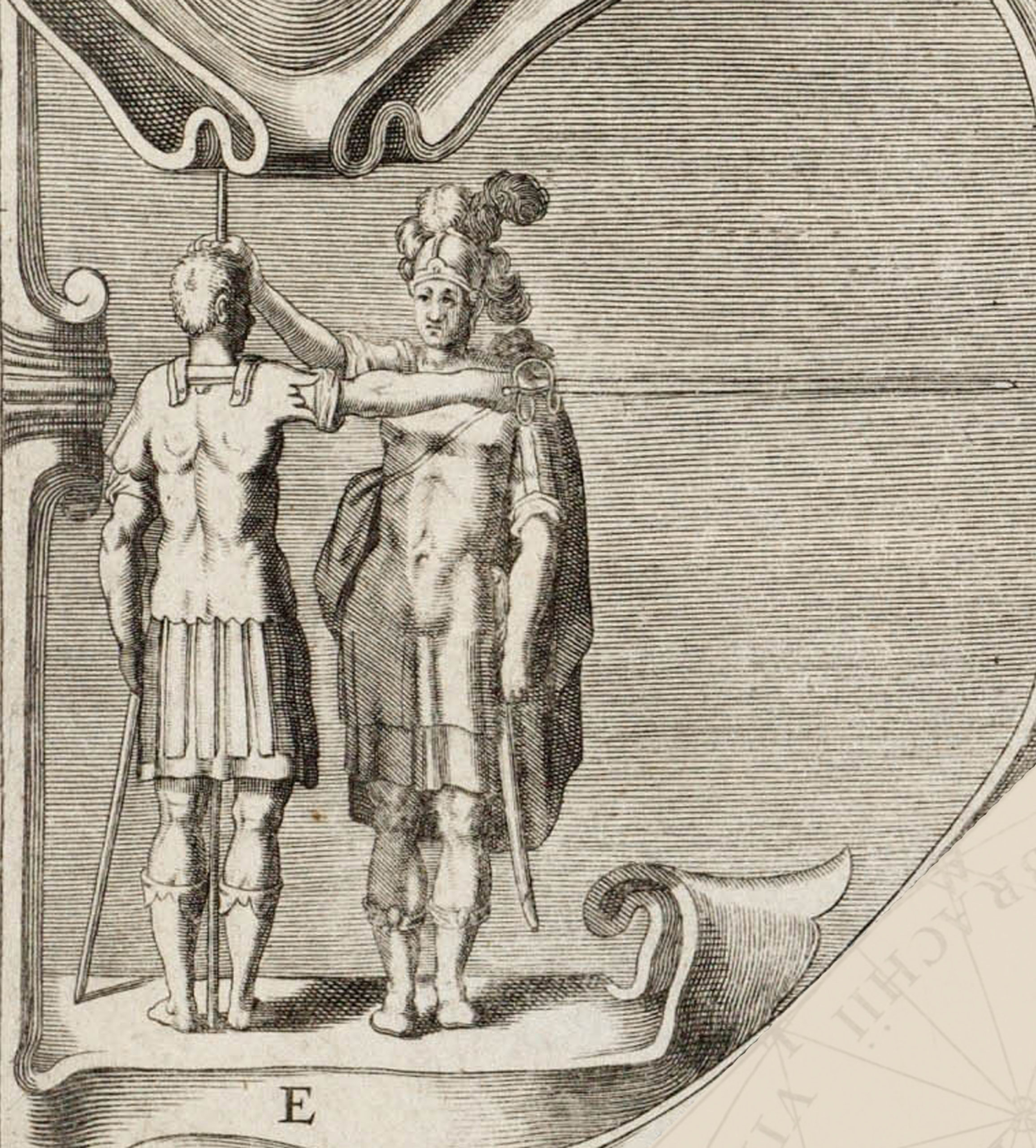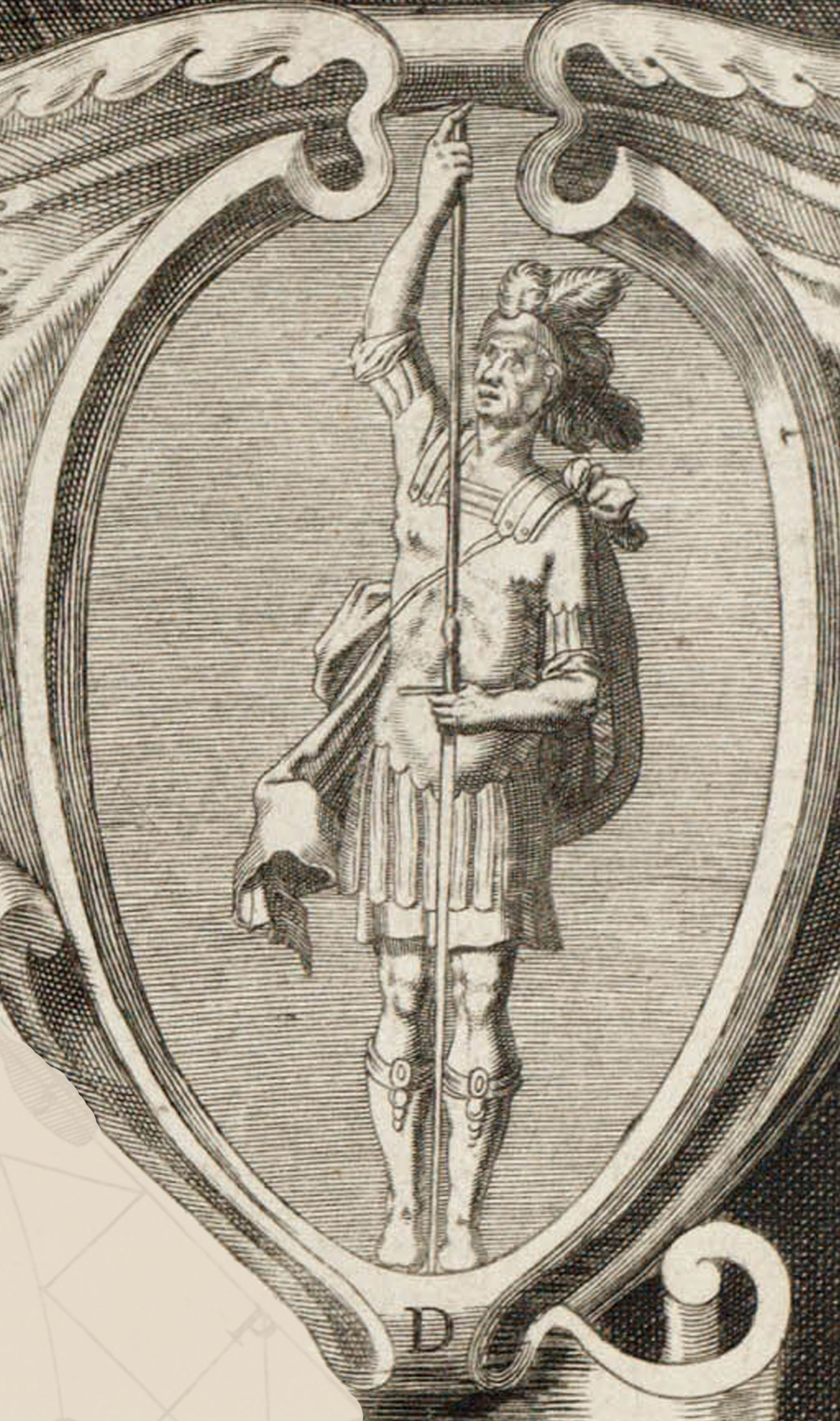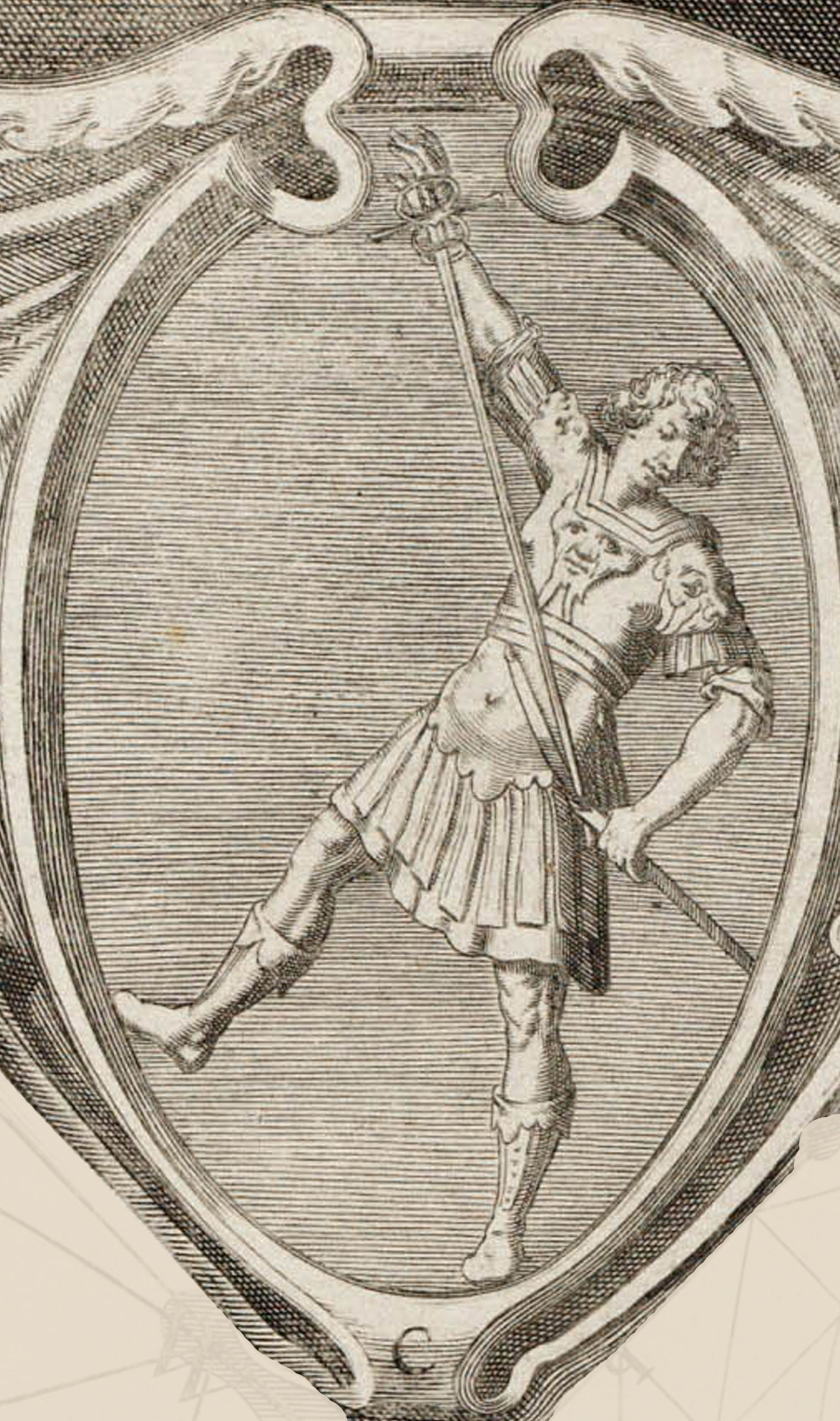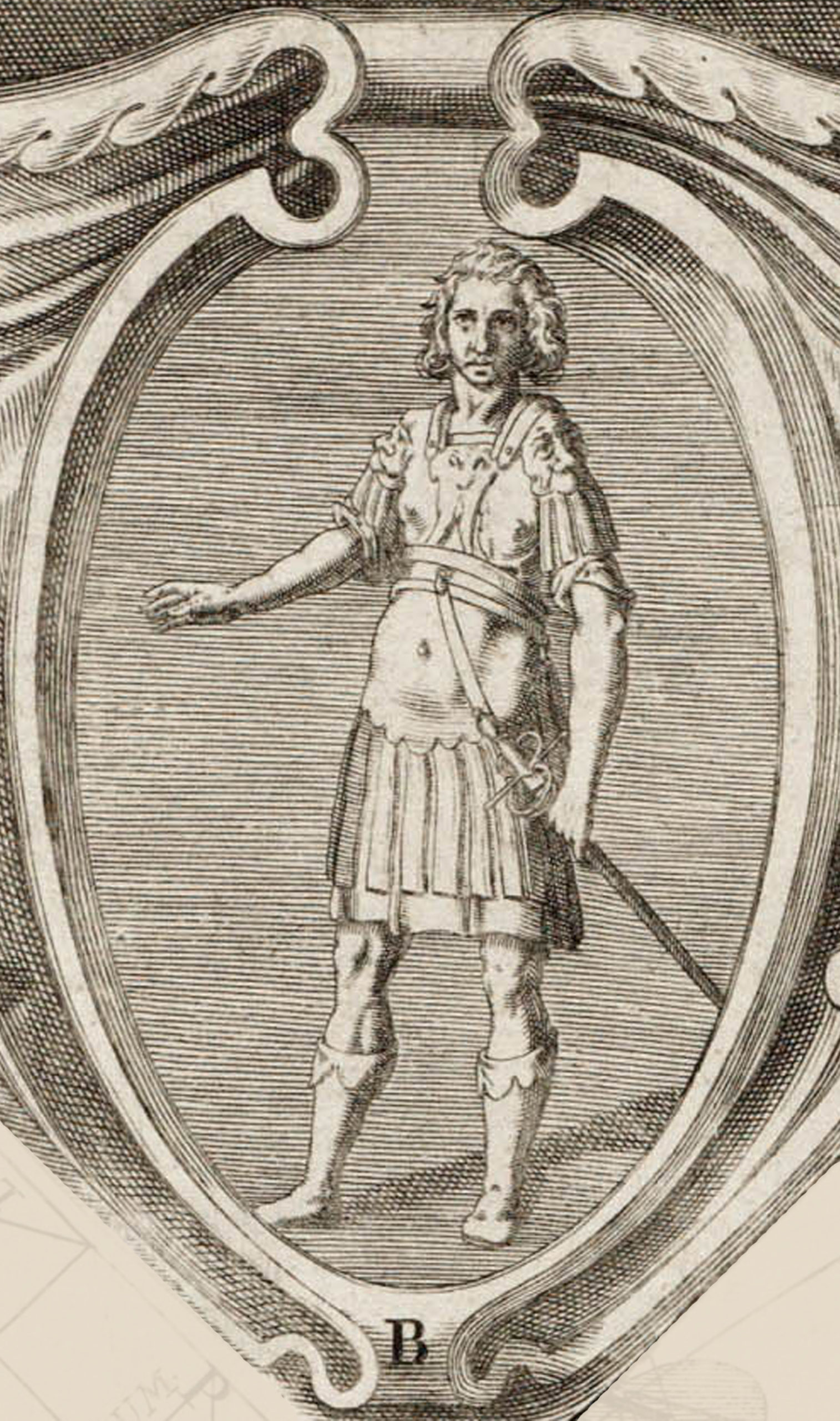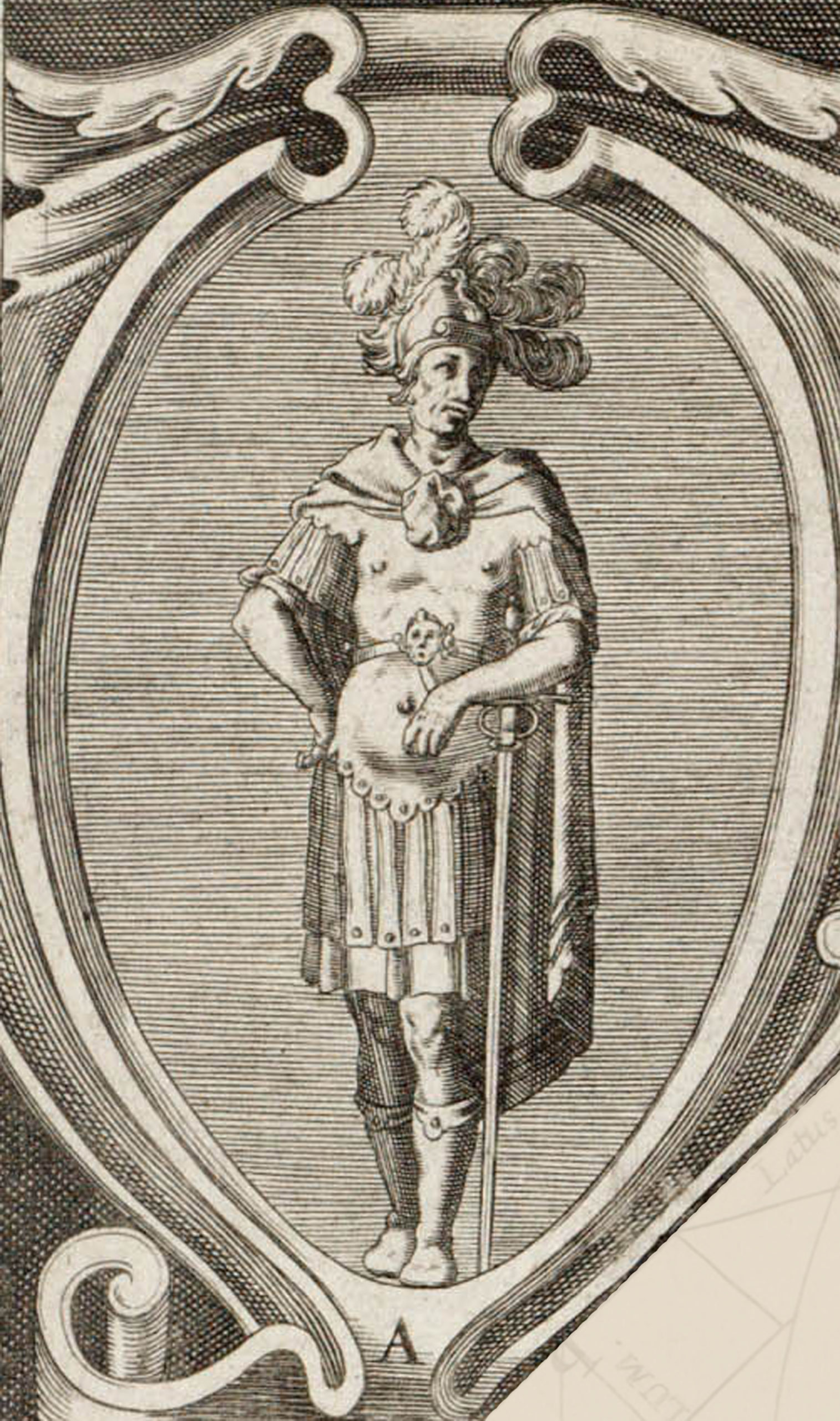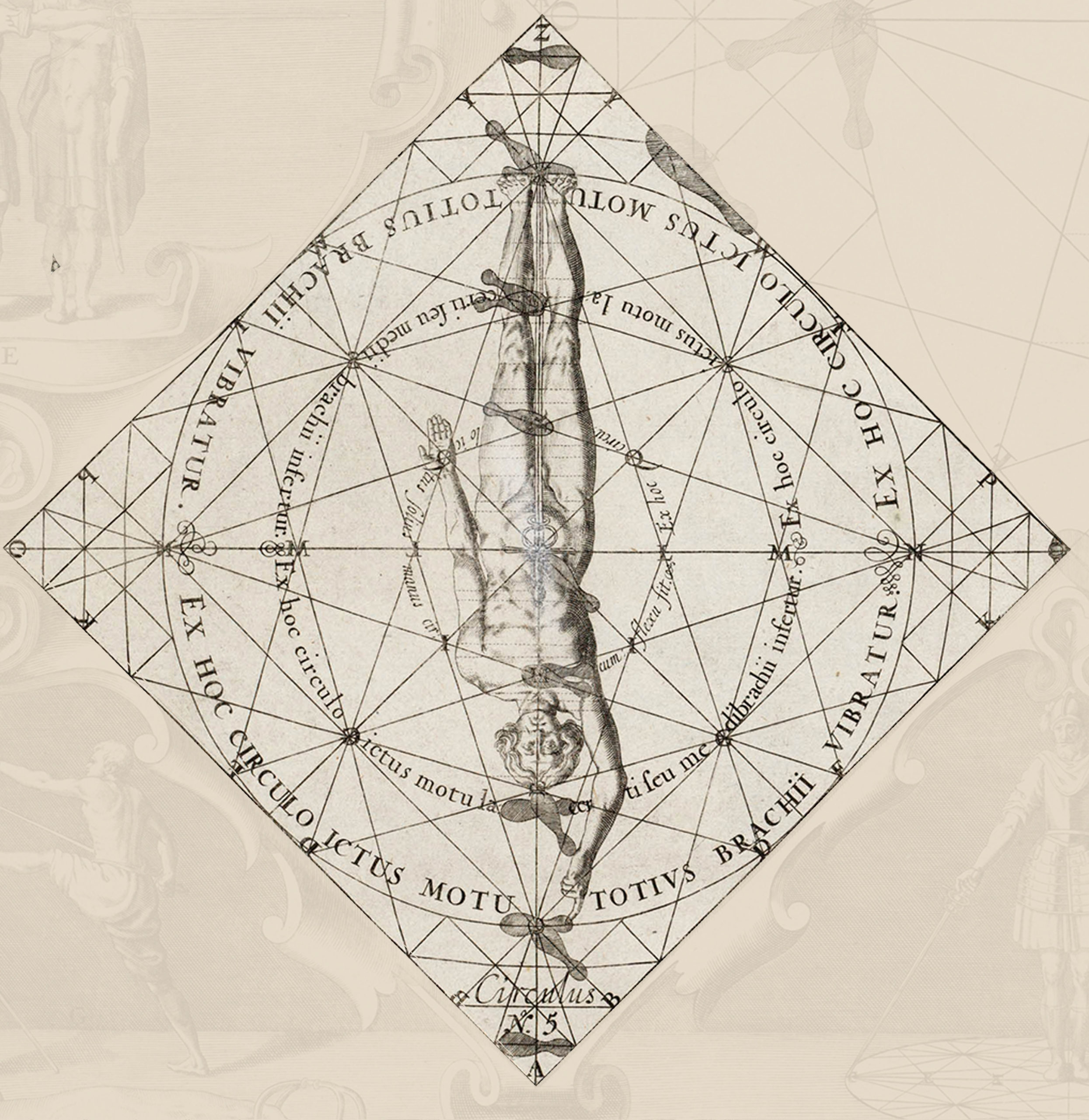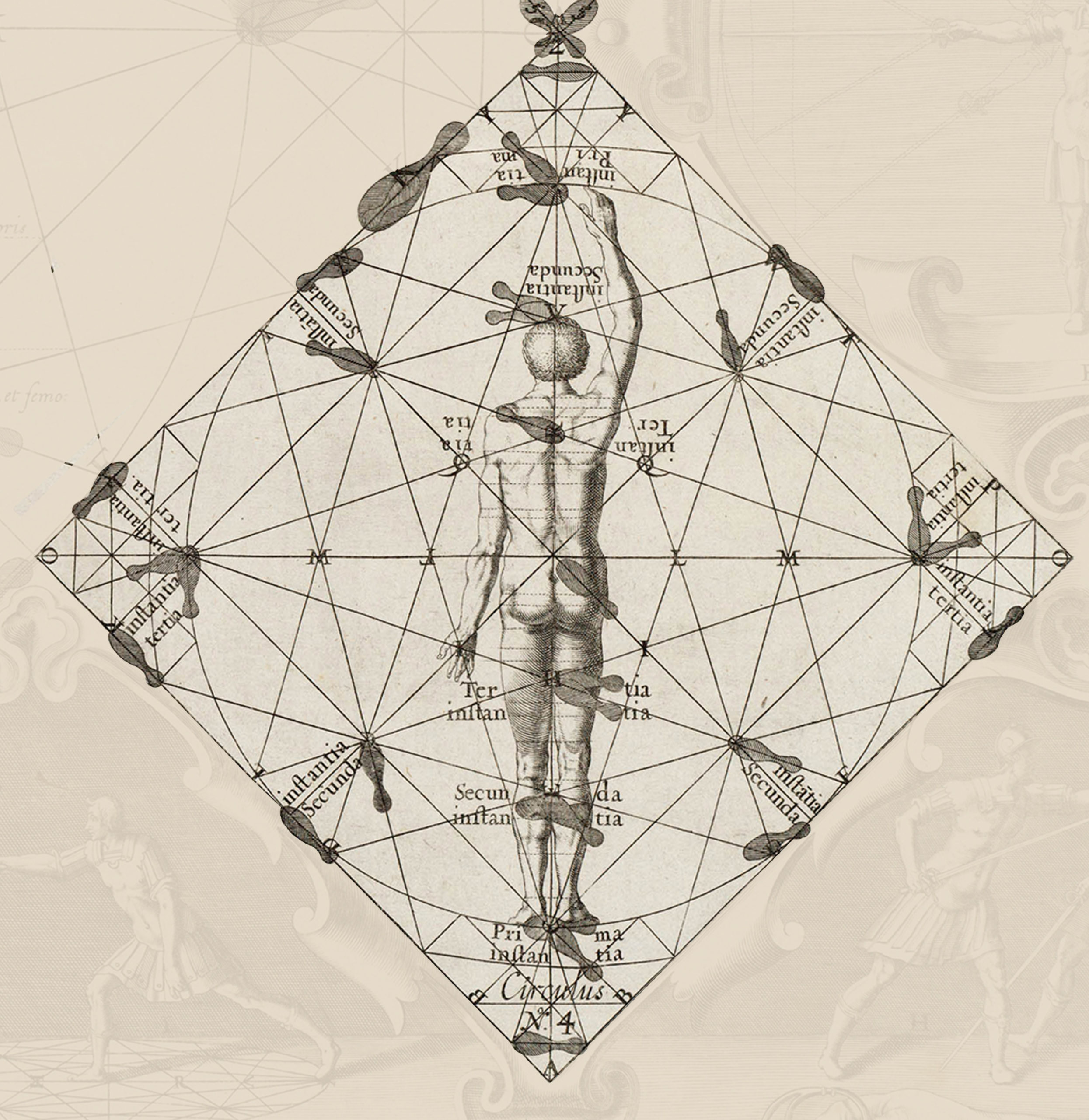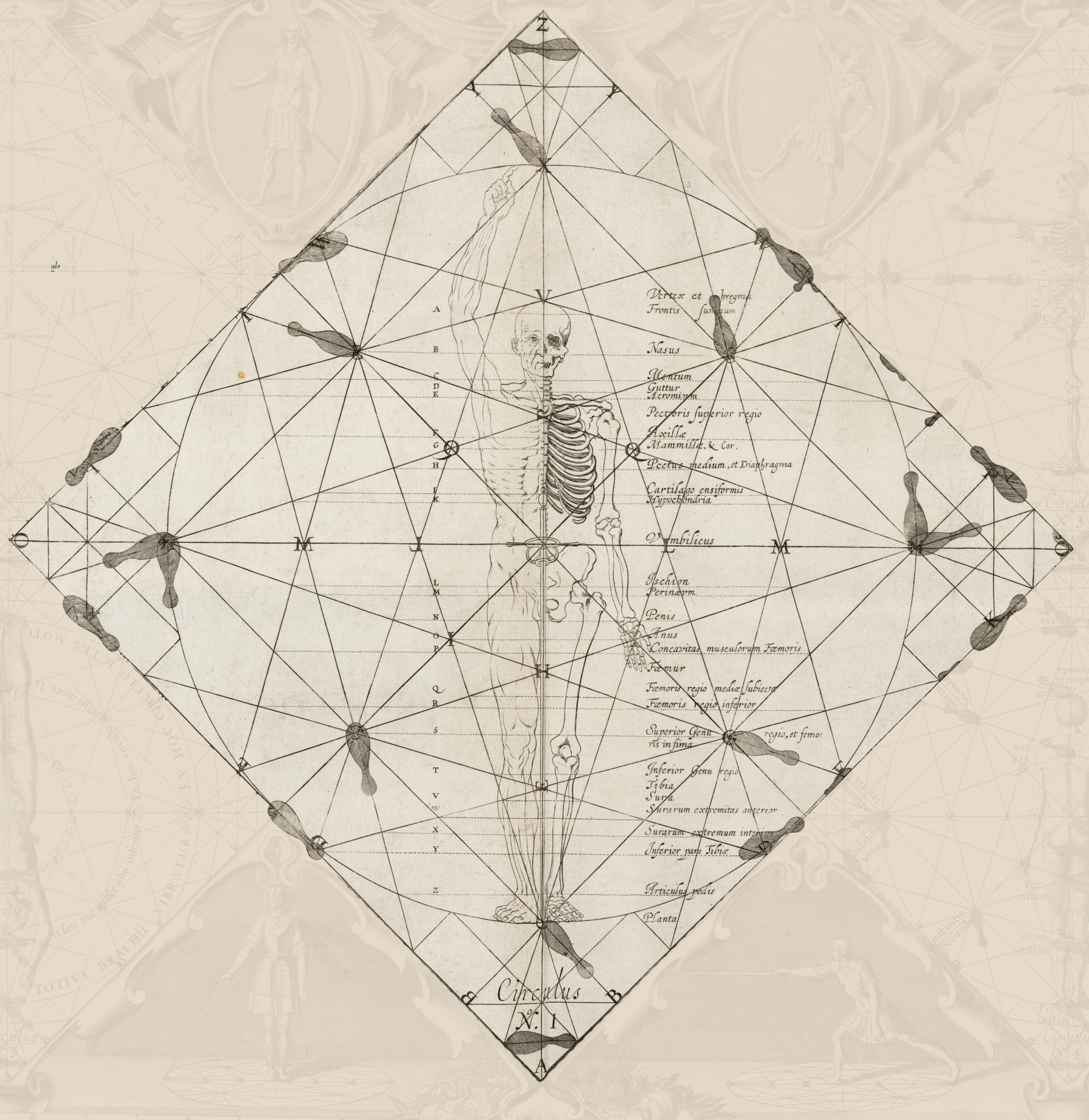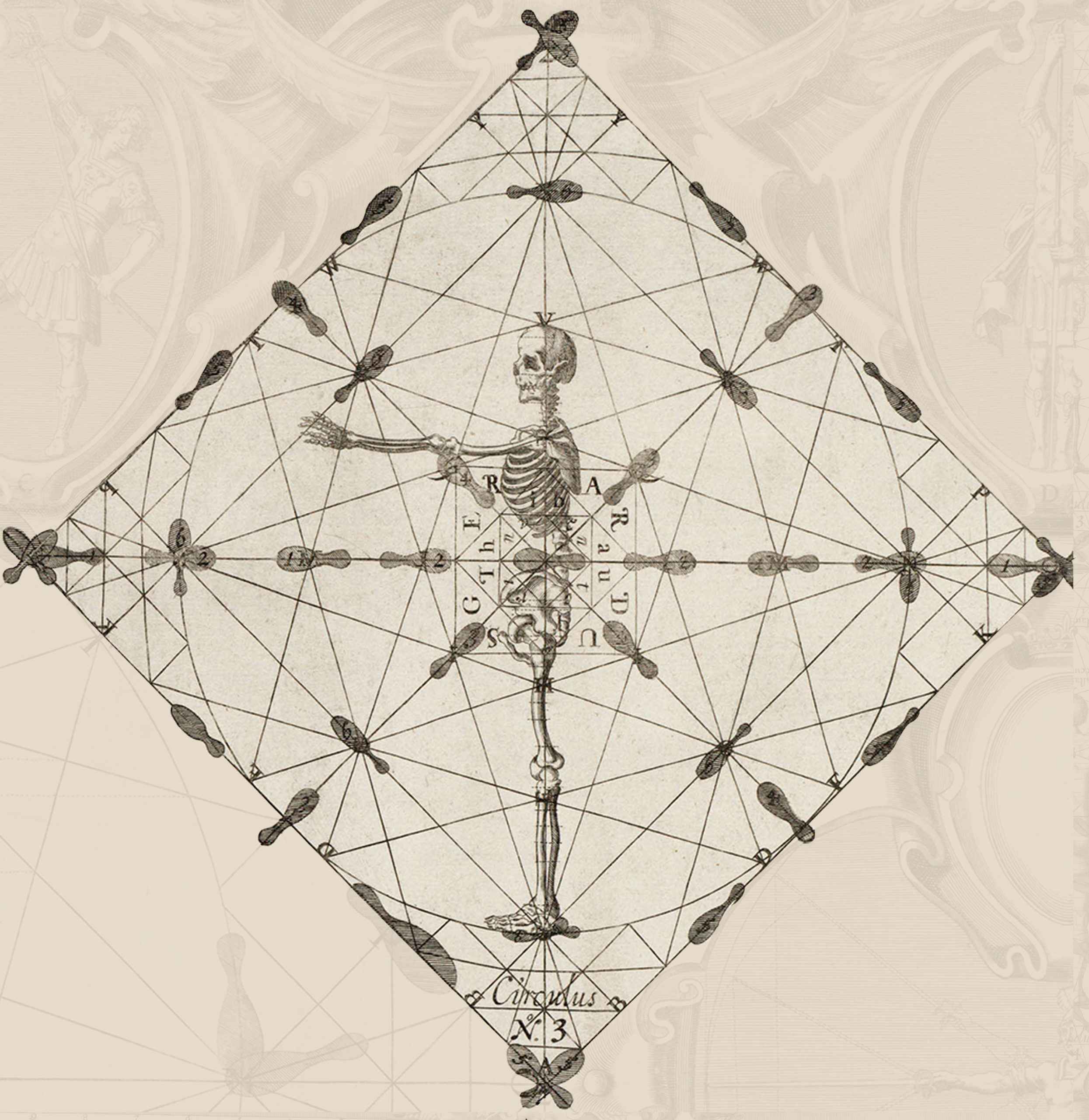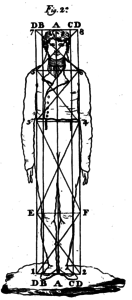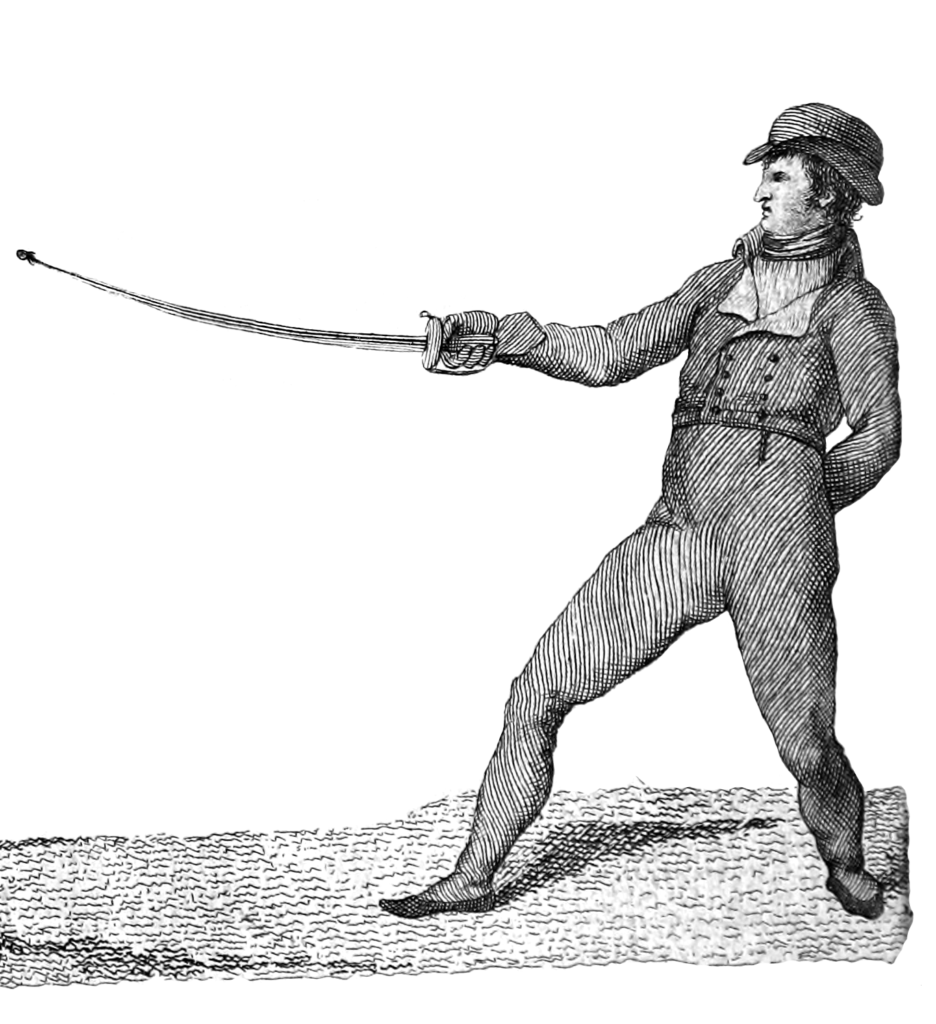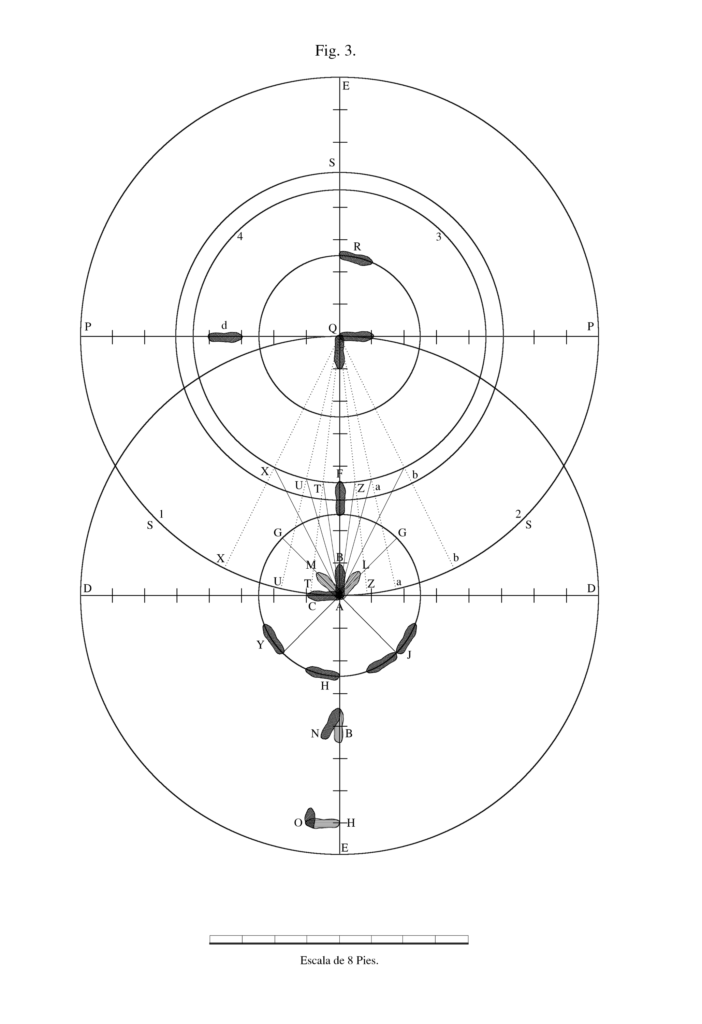
19. To impose a foundation for the circumstances necessary for the exercise of the saber, nothing is more important than the comprehension and execution of the movements of the body, because of these, no less than of the weapon and its various positions, are born the defenses and offenses which are the object of this treatise. Consequently, knowledge of the lines and angles which form the Inferior Plane are the first notions which should occupy one who desires to achieve perfection in this exercise.
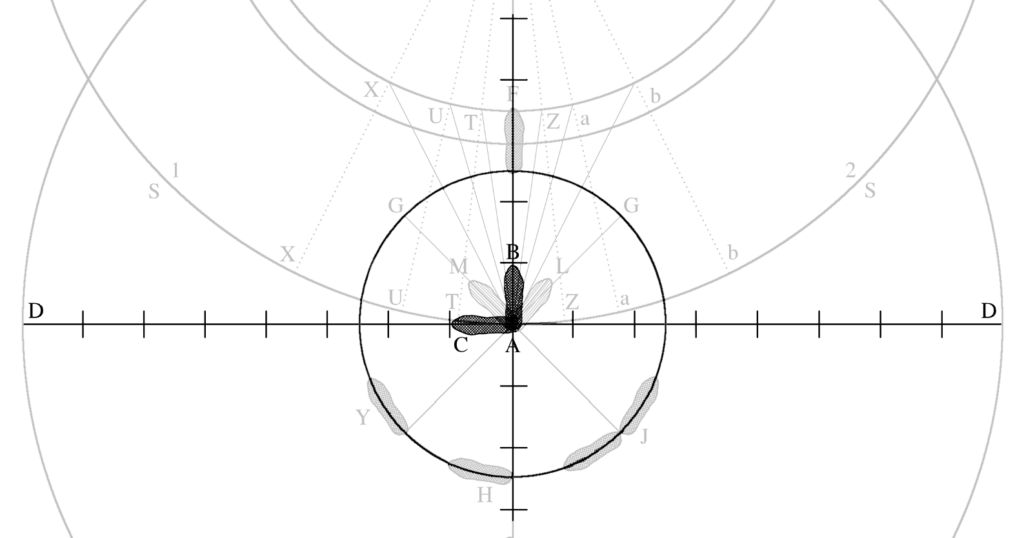
20. To begin this important subject, imagine a man standing in any one place, and take this point as the center of his movements, Letter A, Plate 2. He will assert himself putting his body straight and supported equally on both legs, the head steady and the feet placed with the right heel against the left, such that the point of the first looks at the same part that is directed at the collateral plane of the side letter B, and the point of the left forms a line with his heel, which cuts the other at a right angle C. These two lines are not limited to a short extension, but run an undetermined length, although for the time being, I have limited them to points DD and EE. The line DD is called the tangent, and EE, the diameter, is divided into three feet or Castillian Tercias, whose uses I will explain going forward, and this is the way to assume the stance for the right foot in the middle position of the planes, and in it you will direct the face and vision toward the line of the diameter.
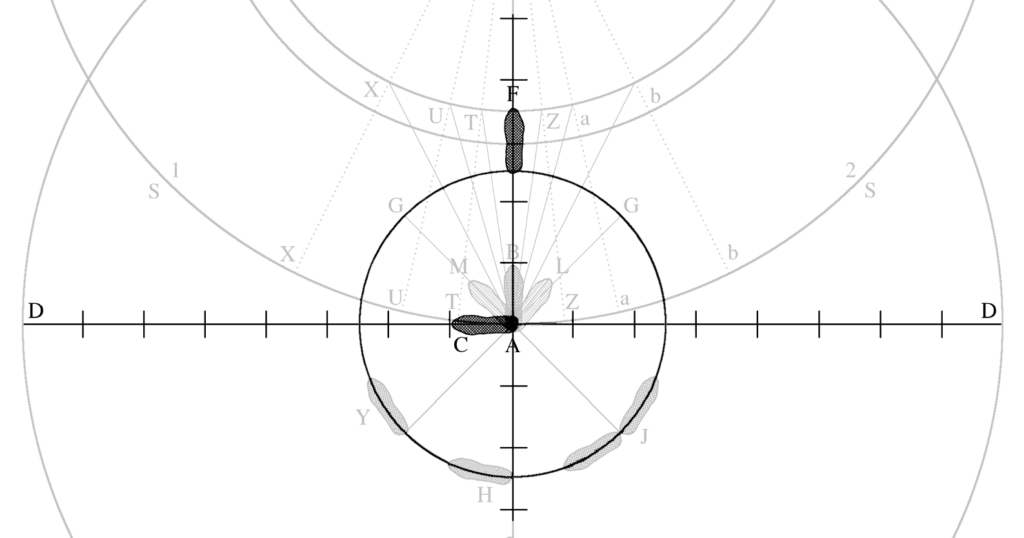
21. Assume this stance with both legs bent at the knees and the trunk firm, with the body resting over the left, advancing the right foot forward to F on the line of the Diameter without straightening the other leg. Place the heel two and a half feet away from the the place it occupied in the previous instruction and leaving the left firm. This is called the forward stance.
Two and a half Castillian feet converts to about 27 inches or 68.5cm.
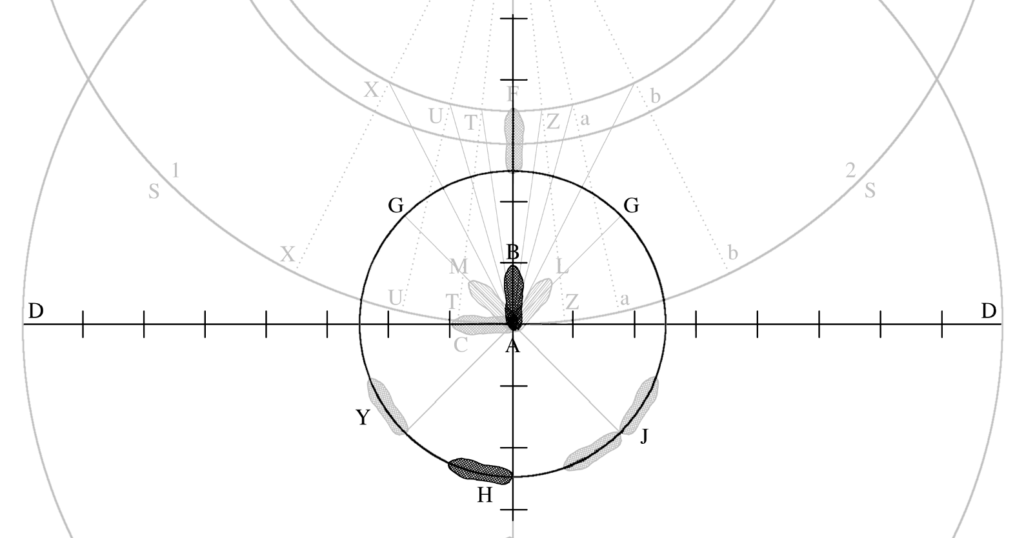
22. Imagine that the two legs are a compass, and that turning the left heel describes to the right a circle G, G, Y, J, which we will call yours. If, bending the legs as I said, and supporting the body on the right, you make yourself walk your left foot, extending the leg well to the point H, this will be the rearward step.
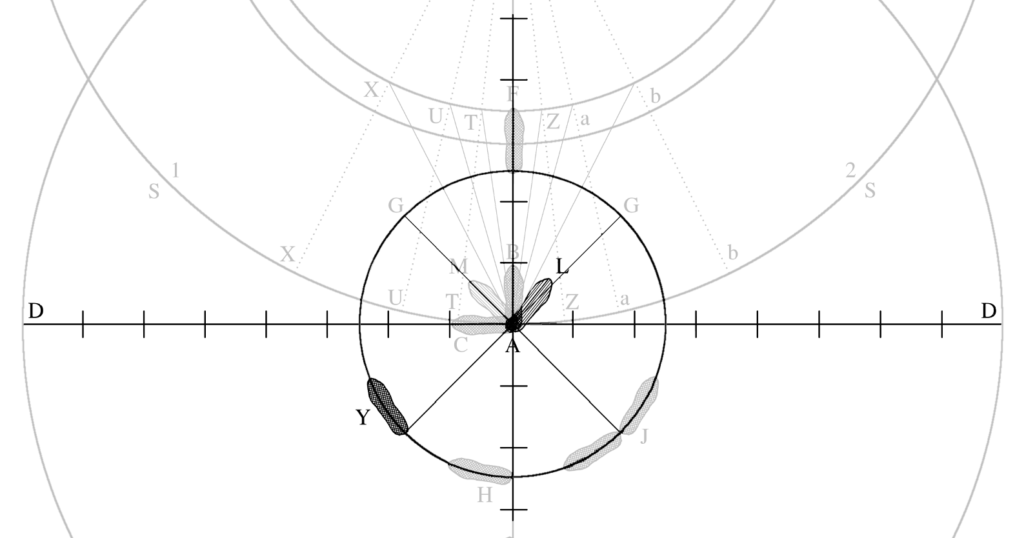
23. The figure shows that the diameter and tangent make of your circle, four right angles which, divided into equal parts, each form two diagonal lines upon which only on the right stance and the bent legs as said, lift the left foot C, supporting the body on the right, and place it on the point Y while, at the same time, turning the right on its heel to situate it with respect to L. I call this stepping back on the left diagonal with the foot on that side.
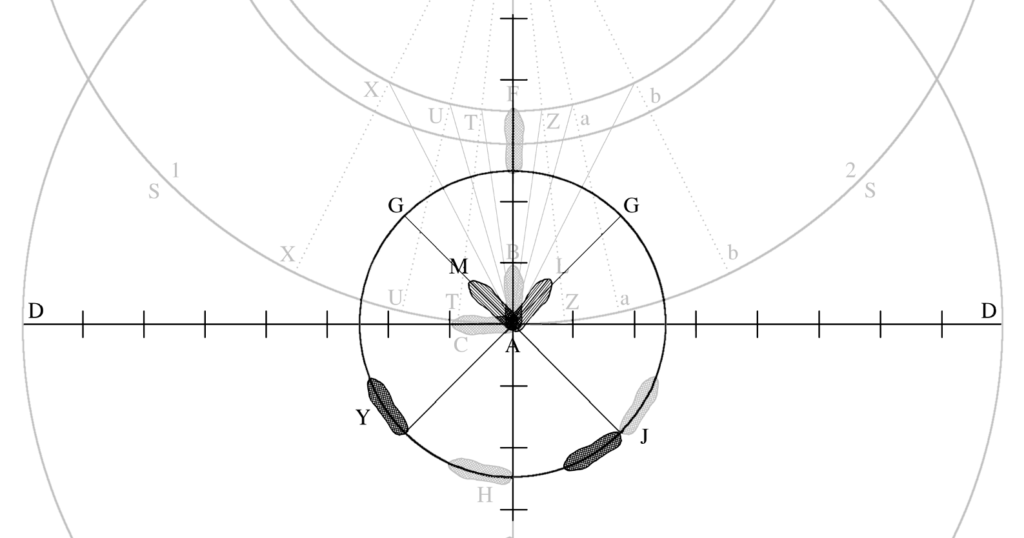
24. On the right stance with the same bent legs, walk the left foot to the point J, incline the body on to the strong foot, and rotate the foot on its heel to occupy the point M. This same step itself is executed moving in the center of the circle on the left heel, passing the right foot to J, so that the left perfectly covers the stance represented in M. In these two steps, the body rotates around the center, A, and they are named after the other steps for the right diagonal with one or the other foot. If you stand back on the line of the diameter, H, having the left foot on the point J and from here return to the same line or point Y, rotate on your heel or the point of the right foot, you will have moved by the diagonals over the center.
25. One who fights attacks or is attacked and, in consequence, their body must accommodate these circumstances, the virtue of which is verified by certain arrangements and a given number of balances and steps.
26. What I call balance is the inclination of the body either forward or back, making only one leg support almost the entire machine and the other only serving to give more support to the body movements so that they are not burdensome. But, since the balances cannot be done in the right stance, it is necessary to strengthen the stance forward, which is to say that, if the body is loaded on the right leg, which is bent, such that the shoulder and the heel of the same side form a perpendicular line, this is balanced forward. Note that the left leg should remain extended as much as possible, keeping the stance well seated in the place it occupies.
27. If, after this movement, the body is loaded onto the left foot, guarding the circumstances of support on it, stretch out the right hamstring and bring the body up by bending the left leg so that this heel and shoulder on the same side make a perpendicular line, this is balancing back.
28. Although, to impose what the balances are to do in anticipation of a step to the front or rear is not always a useful way to do things because, in a fight, they must be so united with the step that they cannot be distinguished from each other in time. Consequently, it should be born in mind when making the step, that it must be accompanied by the balance which is natural to the attacks or removals which occur.
29. After the stances and balances, I must treat about the motions of the body, or oppositions of the planes, since they are inseparable from the others. Therefore, to move square, step to the rear, BH, presenting the right collateral and raise the body onto the point of the toes (keeping the legs bent as you have) and pivot on them in order to bring the chest vertical to the front. This is effected by removing the right heel toward the left, touching the line of the diameter with only the point and leaving the other foot affirmed half way and the heel raised as shown in the figure outside your circle, which I have distinguished with the letters NO.
30. If stepping to the rear, you move half the body from the waist to the shoulders, or trunk, so as to present the contrary, as much as possible, the right vertical, you will have taken the arrangement which I call the movement of profile. You can move to this position from the arrangement of the square or halfway between one and the other.
31. All of the steps that I have explained are susceptible to the stated movements and balances. So, in any of them, one can be forward or back, squared, profiled, or in half-position.
32. I have already treated on the simple steps, but I have neglected to address the compounds and, to do so, it must proceed in this manner. The first composition to admit is the pass from one to another, which I call changing the step. Perform this operation: if standing forward CF, join the right heel with the left BC, maintaining bent legs and from here, the last is brought to H, leaving the body balanced forward. If, from this arrangement, you intend to change again, rotate the left heel toward the bent right knee, and advance with the last to F without balancing forward. Execute in the same way on the diagonals Y, J, with balance or without.
